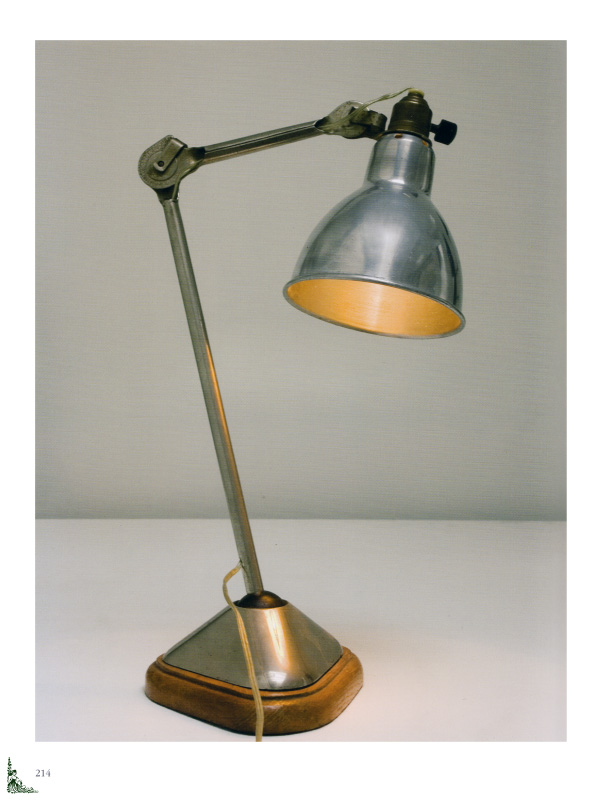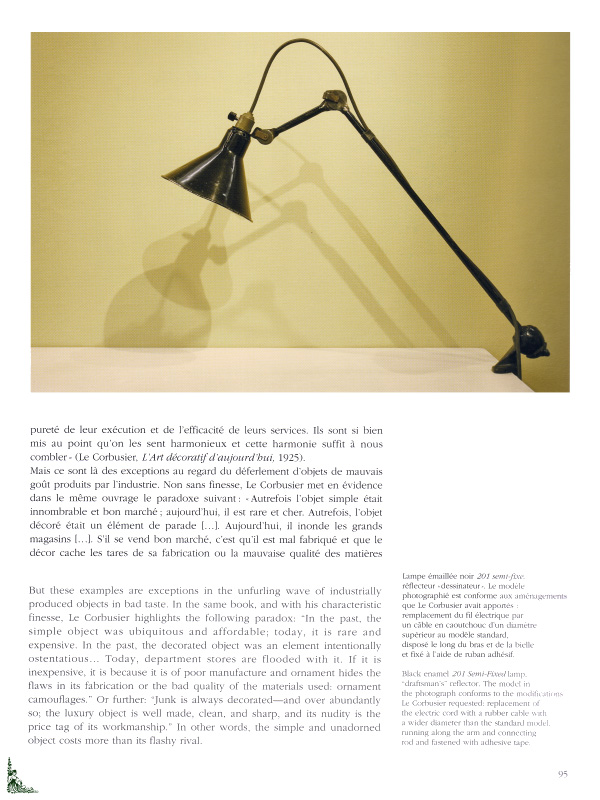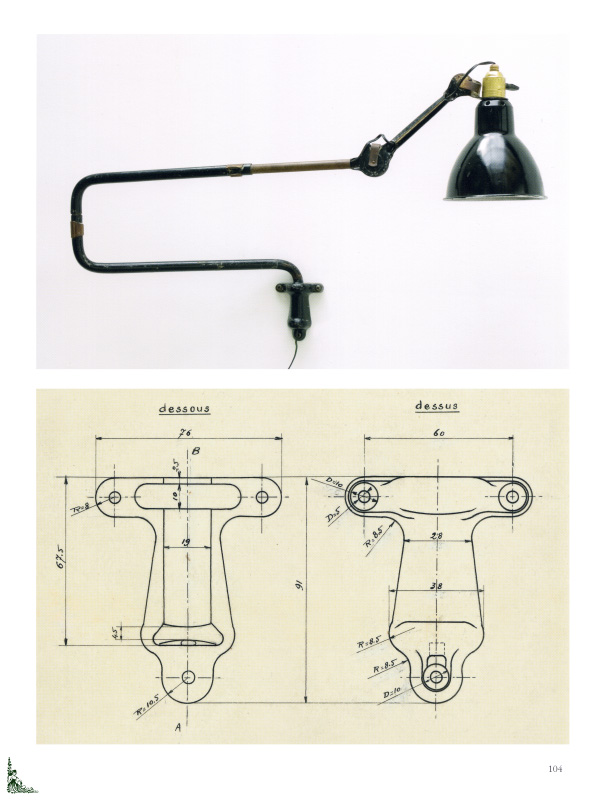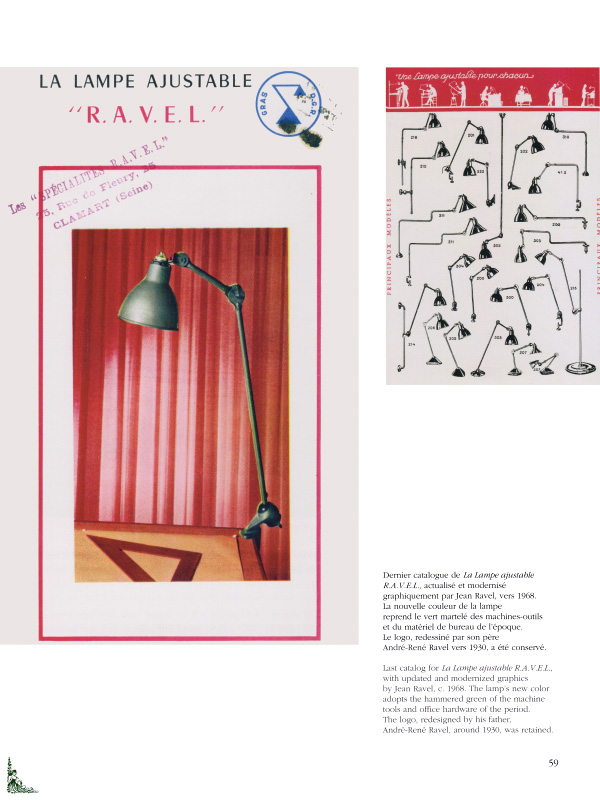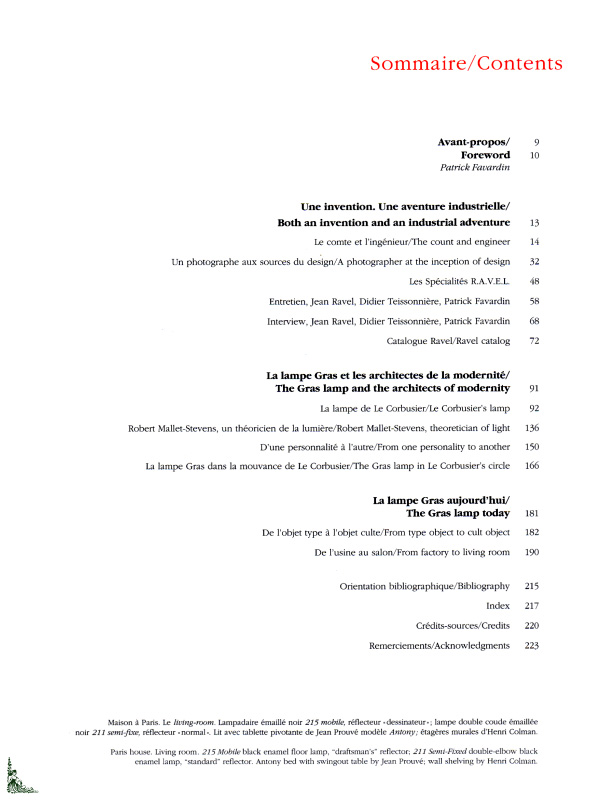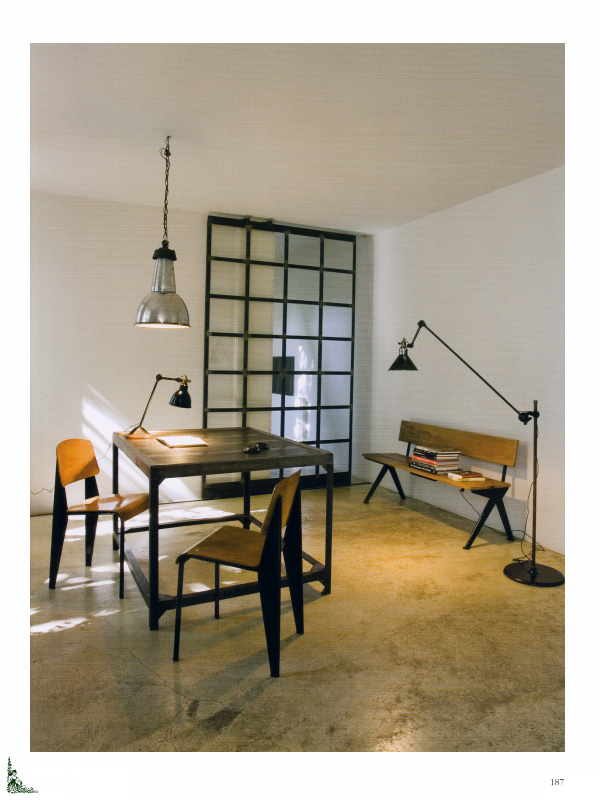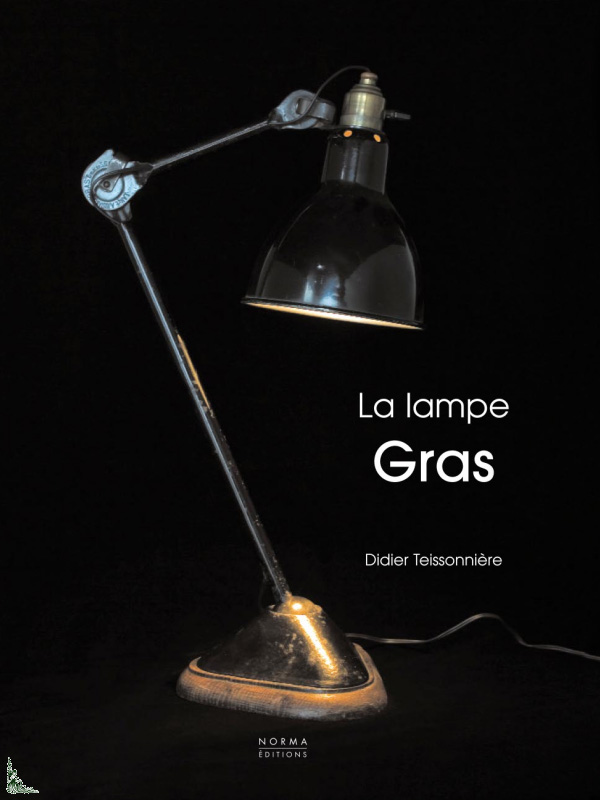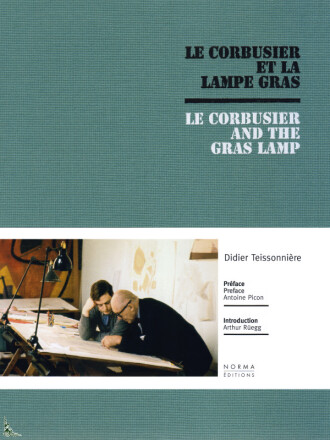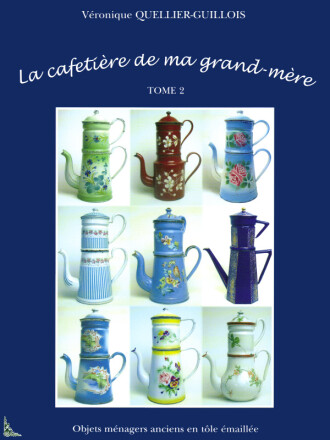The Gras Lamp, 2nd. ed.
Informações sobre o livro
| Autor : | Didier Teissonnière |
| Editor : | Norma (2012) |
| Encadernação : | Hardcover w/jacket (224 full color pages) 9 inches x 12 inches |
| Línguas : | French/English |
| ISBN : | 978-2-9155-4244-8 |
| EAN : | 9782915542448 |
Descrição
The Gras Lamp, 2nd. ed., by D. Teissonnière, Ed. Norma, 9 inches x 12 inches ( 23 cm x 30.5 cm ), hardcover book with 224 full color pages - French/English edition
This hardcover book with 224 full color pages and over 400 illustrations recounts the history of the famous Gras Lamp, Le Corbusier's lamp, created in 1921.
The Gras Lamp has en exceptional place in the history of the lamp.
Designed and manufactured in 1921, it pioneered a new system of lighting whose vocation was to meet the demands of both the world of industry and the rapidly developing service sector.
Easily adaptable to each user's needs, the Gras lamp efficiently lit machine tools, drawing boards, offices, laboratories, and even the operating room of the liner Normandie.
Eschewing ornamental mannerism, its creator, the engineer Bernard-Albin Gras, endowed it with en aesthetic that was the product of the perfect harmony of purpose and design, the basis for what is now known as "design".
As such, the lamp's success was immediate, so much so that it inspired imitations, notably by members of the Bauhaus school fascinated by this incunabulum of modernity.
But it was Le Corbusier who imparted it with a distinctive aura, seeing in it, in accordance with his own terms, an "object-tool" reduced to its pure function and a "type object" that he used both in his office and architectural works. Following suit, Robert Mallet-Stevens, Eileen Gray, Michel Roux-Spitz, Sonia Delaunay,
Georges Bracque, and many other avant-garde figures adopted the lamp, helping it go down in legend.
This prestigious career went hand in hand with a more anonymous success in the workaday world, which was exceptional both in terms of the volume of orders and its longevity.
There are practically no other examples of lamps that were continuously manufactured - without any major modifications - for other half a century.
After a few decades of obscurity, the Gras lamp found favor with a new generation of architects, interior decorators, and collectors fascinated by the object, a product of early modernism in the same way as the furniture of Le Corbusier, Herbst, Prouvé and Perriand.
This book recounts the history of an invention in the aesthetic choices of the interwar period and the non eclectic ones of the present.
Contents:
- Both an invention and an industrial adventure
- The count and engineer
- A photographer at the inception of design
- Specialties of R.A.V.E.L.
- Interview, Jean Ravel, Didier Teissonnière, Patrick Favardin
- Ravel catalogue
- Robert Mallet-Stevens, theoretician of light
- From one personality to another
- The Gras Lamp in Le Corbusier's circle
- The Gras Lamp today
- From type object to cult object
- From factory to living room
The texts in English and in French are written by Didier Teissonnière.
 Description française
Description française
La Lampe Gras, 2e ed.
Détails du livre
| Auteur : | Didier Teissonnière |
| Éditeur : | Norma (2012) |
| Reliure : | Relié sous jaquette (224 pages couleurs) 23 cm x 30.5 cm ( 9 inches x 12 inches ) |
| Langue(s) : | Français/Anglais |
| ISBN : | 978-2-9155-4244-8 |
| EAN : | 9782915542448 |
Description
La Lampe Gras, 2e ed., de D. Teissonnière, Ed. Norma, 23 cm x 30.5 cm, relié avec 224 pages couleurs - Edition bilingue Français/Anglais
Cet ouvrage de 224 pages avec 400 illustrations présente la célèbre lampe Gras, la lampe de Le Corbusier. La lampe Gras a une place inédite dans l'histoire du luminaire.
Conçue et fabriquée en 1921, elle inaugure un genre nouveau de système d'éclairage dont la vocation est de satisfaire aussi bien le monde de l'industrie que le secteur tertiaire en plein essor.
A géométrie variable et aisément adaptable au gré des besoins de chacun, la lampe Gras est à même d'éclairer de la façon la plus performante les machines-outils, les planches à dessin, les bureaux, les laboratoires et jusqu'au bloc opératoire du paquebot Normandie.
Répudiant tout maniérisme ornemental, son créateur, l'ingénieur Bernard-Albin Gras, l'a dotée d'une esthétique relevant de cette adéquation parfaite du dessein et du dessin, qui fonde ce qu'on appelle aujourd'hui le design.
Comme telle, son succès fut immédiat, au point de susciter interprétations et imitations, notamment chez les membres du Bauhaus fascinés par cet incunable de la modernité.
Mais il revient à Le Corbusier de lui avoir conféré une aura particulière, voyant en elle, selon ses propres termes, un "objet-outil", réduit à sa pure fonctionnalité, un "objet type" dont il a fait bénéficier son agence comme ses réalisations architecturales.
À sa suite, Robert Mallet-Stevens, Eileen Gray, Michel Roux-Spitz, Sonia Delaunay, Georges Braque et tant d'autres figures de l'avant-garde l'ont adoptée, contribuant à la faire entrer dans la légende.
Cette carrière prestigieuse se double d'un succès plus anonyme dans le monde du travail, exceptionnel par le volume de ses commandes comme par sa durée.
Il n'est guère d'autre exemple de lampe qui, sans modification majeure, ait été éditée pendant plus d'un demi-siècle.
Après quelques décennies d'éclipse, la lampe Gras retrouve une notoriété auprès d'une nouvelle génération d'architectes, de décorateurs et de collectionneurs, fascinés par cet objet de la première modernité au même titre que les meubles de Le Corbusier, Herbst, Prouvè et Perriand.
Cet ouvrage retrace l'histoire d'une invention et d'une aventure industrielle, mais il se veut aussi une promenade à travers les choixesthétiques de l'entre-deux-guerres et ceux, plus éclectiques, du temps présent.
Principaux chapitres de l'ouvrage :
- Une invention. Une aventure industrielle
- Le comte et l'ingénieur
- Un photographe aux sources du design
- Les Spécialités R.A.V.E.L.
- Entretien, Jean Ravel, Didier Teissonnière, Patrick Favardin
- Catalogue Ravel
- La lampe Gras et les architectes de la modernité
- La lampe de Le Corbusier
- Robert Mallet-Stevens, un théoricien de la lumière
- La lampe Gras dans la mouvance de Le Corbusier
- La lampe Gras aujourd'hui
- De l'objet type à l'objet culte
- De l'usine au salon
Les textes en Français et en Anglais sont de Didier Teissonnière.



